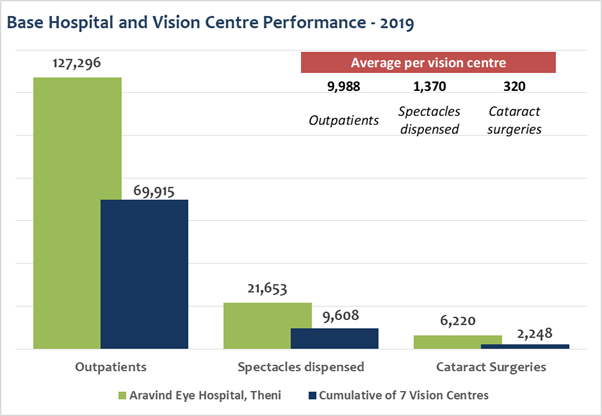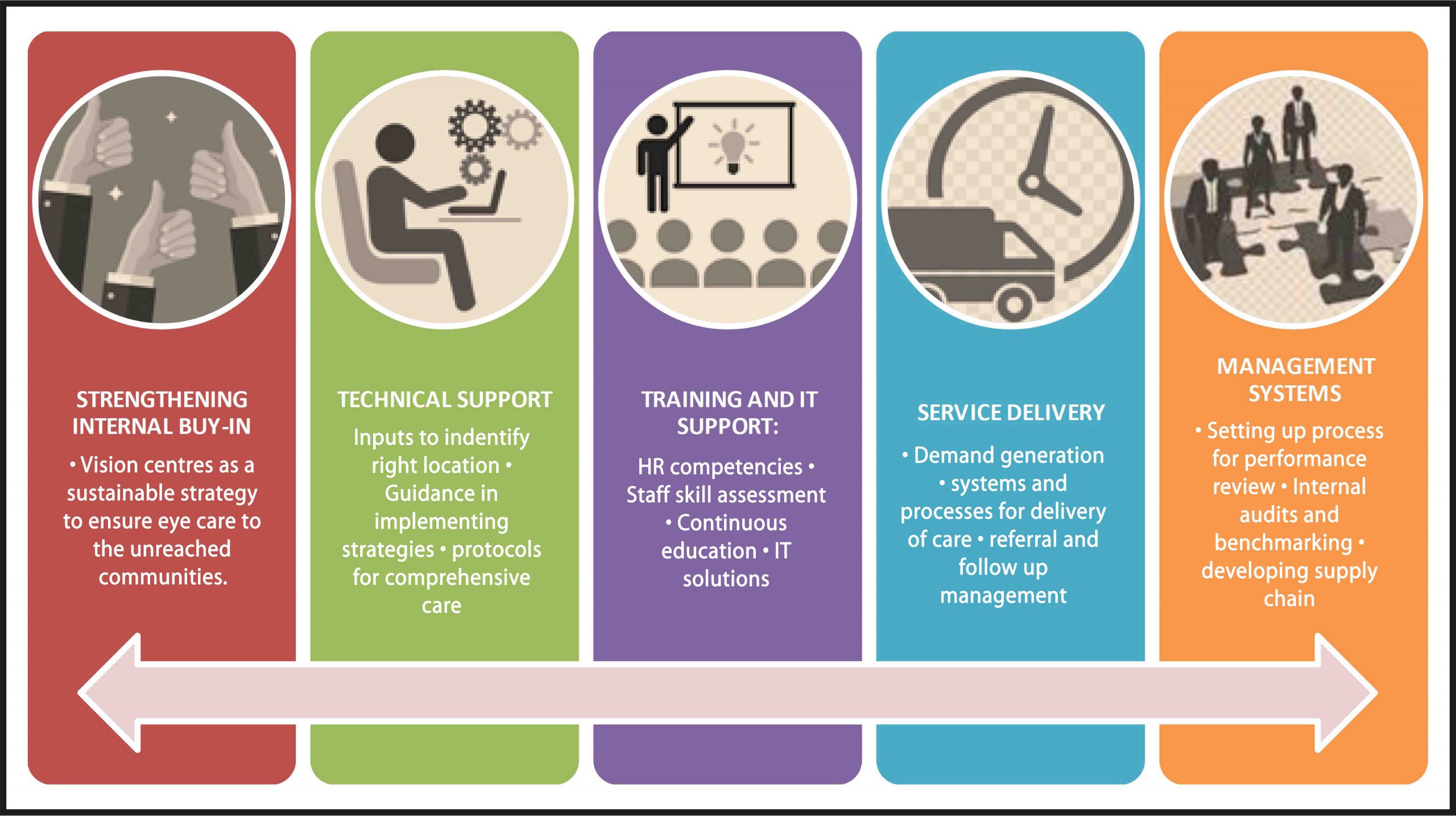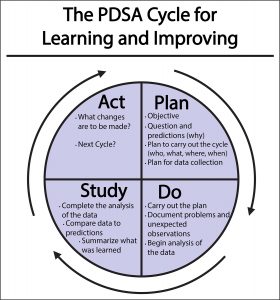Aim
To enable participating hospitals to establish and efficiently run IT enabled vision centers.
Why Vision Centres?
Vision centres (VCs) are emerging as an integral part of eye care ecosystem in the developing world. With the right approach, telemedicine and IT support, these centres can effectively function as an extension of outpatient services, offering comprehensive care to populations that are not reached otherwise. Well run VCs can substantially contribute to the surgical and subspecialty volumes of the base hospital.
What this collaborative offers?
- Facilitation to strengthen internal buy-in for vision centres
- Guidance to set up vision centres
- Personalised technical support for a year
- Guidance to strengthen base hospital support systems for managing vision centres
- Ideas for demand generation and strengthening follow up care
- Protocols for comprehensive eye care delivery
- Support towards developing HR competencies, structured skill assessment and a framework for continuing education
A success story of vision centres from Aravind:
Aravind Eye Hospital in Theni (Tamilnadu) manages a network of 7 vision centres catering to the eye care needs of half a million people. In 2019, these vision centres contributed to 27% of the hospital’s total cataract surgical volume. On an average each centre dispensed 1,370 spectacles and contributed 320 cataract surgeries during the year. One-third of patients referred for cataract surgery from these vision centres underwent the surgeries under the paying section. The case finding cost for cataract surgeries referred through vision centres was zero as compared to INR 300 to 500 (USD 4 to 7) per surgery incurred through outreach services.

Vision centres are proven to be a successful strategy for providing comprehensive primary eye care across the world. The following are some of the key features of vision centres:
- Being locally available, VCs ensure access to care
- Provides comprehensive eye care at a significantly low cost to the Institution and the patient – patients can save the cost of travelling to an eye hospital in a distant town along with an attender and lost wages.
- Enhance spectacle sales and uptake of surgeries. Based on Aravind’s experience, a vision centre from its third year of operations, would sell 1,000 spectacles and have 300 patients undergo cataract surgeries, annually.
- Builds and sustains goodwill for the organization in the rural communities
- VCs contribute greatly towards reducing carbon footprints by cutting down the need for travel.
During the year-long collaborative, LAICO aims to help the participating hospitals to establish and efficiently run IT enabled vision centres through the following steps:

This collaborative is for you if you are:
- an eye hospital/eye care institution aiming to establish vision centres or improve existing vision centres and
- willing to invest in equipment, training and IT infrastructure towards that aim
What is expected from the participating hospital teams?
- Each participating eye hospital should identify a three-member team consisting of
A representative from senior management
An Ophthalmologist
An Optometrist
- Strong commitment and support from the leadership to develop and implement action plans
- Financial readiness for setting up vision centres during the first quarter of the collaborative and willingness to investment in other resources required to improve the effectiveness and efficiency of the vision centres
- Develop a culture of evidence based management
The participating hospital teams should take up the process of setting up vision centres and running them efficiently as an improvement project with specific time frames. The process would involve hospital teams to evolve and run PDSA (Plan-Do-Study-Act) cycles aimed at bringing about changes for improvement.
The Collaborative process includes
- Three online learning sessions. The first learning session scheduled in October 2020, will mark the beginning of the collaborative period and will enable each partner hospital to develop a strategic action plan. The second online learning session will be held in March 2021 and the final learning session in Sep 2021. A typical learning session would be 5 day long with 2 to 3 hours of online learning per day. Dates for the first learning session: 12 to 16 October 2020 (Monday to Friday)
- Periodic Webinars to address operational challenges that may arise during implementation of PDSA.
- Weekly and Monthly Review Calls by the experts and LAICO faculty.
- Onsite support based on requirement.

All the sessions will be handled by experts who have many years of experience in managing and running vision centres. The course inputs will encapsulate 15 years of Aravind’s experience in running close to 80 vision centres and facilitating hospitals in and outside India to establish vision centres. The sessions include online lectures, virtual tours, interviews, participant presentations, breakout group sessions and online assessments.
Course fee:
- India and Nepal: INR 118,000 (Inclusive of GST) per team
- Other Countries: USD 1,593 (Inclusive of GST) per team
The fee will cover:
- 3 online learning sessions.
- Yearlong offline guidance from the LAICO Team
- Structured monthly calls to follow – up progress and to support the implementation of strategies developed by the participants.
- Periodic webinars (minimum 2) on selected topics that will add value to the participants.


